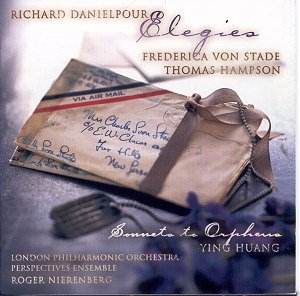 Composer: Johannes Brahms
Composer: Johannes Brahms
Works: Serenade No.1 in D, Op.11; Serenade No.2 in A, Op.16; Liebeslieder Waltzes (selection from Opp.52 & 65)
Performers: Ingrid Sieghart (soprano), Singverein der Gesellschaft der Musikfreunde Wien, Vienna Symphony Orchestra, Gary Bertini
Recording: 28-30 May 1982, Rosenhügel-Studio, Vienna
Label: Orfeo C 008 102 A [2 CDs: 88’43”]
Brahms’s serenades stand as charming yet substantial works, bridging the youthful exuberance of his early compositions with the profound depth that would characterize his later symphonic writing. Composed during a period of personal and professional upheaval, the Serenade No.1 in D, Op.11, and its successor, the Serenade No.2 in A, Op.16, reveal facets of Brahms’s artistry that often remain overshadowed by his more formal structures. The current release under Gary Bertini’s direction offers a refreshing perspective on these works, emphasizing their pastoral qualities while maintaining a symphonic rigor that Brahms would later refine in his orchestral oeuvre.
Bertini’s approach to the First Serenade is particularly noteworthy. He orchestrates the performance with an apparent lightness, bringing forth a clarity that allows the woodwinds to shine alongside the strings. This balance is crucial, especially in a work where the youthful spirit of Brahms is at play. The first movement exhibits a Mendelssohnian effervescence, with the repeat of the exposition executed seamlessly, demonstrating Bertini’s commitment to the form and structure without sacrificing the music’s buoyancy. The nimble playing of the Vienna Symphony Orchestra resonates throughout, particularly in the ‘Scherzo,’ where the dance-like pulse is invigorating rather than perfunctory. Unlike some interpretations that risk dragging this movement into lethargy, Bertini achieves an admirable momentum, a testament to his adeptness at handling rhythmical nuances.
The engineering quality of this recording merits attention as well. The sound is well-balanced and clear, although it may lack some dynamic range, rendering the more subtle contrasts somewhat muted. This slight compromise does not detract significantly from the overall experience, as the details of orchestration remain vivid. One might find the horn timbre at times excessively pronounced, but this does not overshadow the overall buoyancy and vitality of the performance. The Second Serenade, devoid of violins, reveals a mellower character. Bertini’s interpretation here again prioritizes flow over grandiosity, reflecting the intimate nature of the work. The slow movement unfolds with a nocturnal grace that hints at the darker, more complex Brahms of later years. The ‘Quasi Menuetto’ showcases a poignant quality, with Bertini’s reading capturing the essence of melancholy inherent in the music.
The inclusion of the Liebeslieder Waltzes, a charming postscript to the two serenades, rounds out the set attractively, albeit with a somewhat truncated duration on the second CD. The waltzes, originally conceived for vocal quartet, are here rendered with affection by soprano Ingrid Sieghart and the accompanying ensemble. Although the authenticity of Brahms’s involvement in the orchestration of these selections can be questioned, they serve as a delightful encore that complements the preceding works with their lyrical charm.
The performances captured in this release highlight the rural colors of Brahms’s early style, eschewing the urban sophistication often associated with his later compositions. Bertini’s interpretations, while perhaps leaning towards a more subdued treatment, resonate with a spirit that is undeniably true to the essence of the serenades. His ability to keep the music flowing, coupled with the fresh sound of the Vienna Symphony Orchestra, makes this recording a worthy addition to the Brahms discography. Overall, this double CD provides a refreshing exploration of Brahms’s early orchestral works, revealing their charm and sophistication while inviting listeners to appreciate the composer’s youthful creativity.



